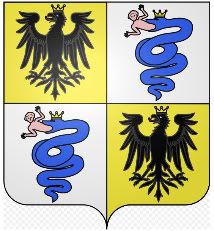[Translated from the article on the Lombardi nel Mondo website]
The Lombard migration in North America
Interview with Ernesto Milani, historian and scholar of the Lombard migration in North America.
A wide-ranging interview with Ernesto Milani, historian and scholar of emigration from England to the United States and Canada: from Missouri to Vermont, from Illinois to Ontario, keeping Lombard roots alive.
What is your training under the Lombard immigration historical research in the United States?
I wrote my thesis on Italian mutual aid societies in the United States, in particular research work on the Lombard Association in Boston, Subalpina Mutual Society. Then I commenced to collect books, postcards and other material on the subject.
The first important work I've done has been on the Italian emigration (in particular, Marchigian and Venetian southern plantations of the Mississippi). From that date onwards, I have done a lot of research on the topic.
Also attended by 1976 the Hague, Italian-American Association and I have contacts with historians who make up this important Association.
How is the map of the Lombards in the United States?
The Lombards who arrived in the United States in the years of mass emigration were mostly miners and laborers. The main destinations to which this emigration was focused are St. Louis, Missouri, Herrin and Rockford, Illinois, Barre, Vermont, Iron Mountain, Michigan, Walla Walla, Washington, and then in Texas, in San Francisco (in particular in the area of San Rafael), in New Mexico and Arizona.
In Canada, however, focused in Ontario, in coal mines on the border between Alberta to British Columbia, and along the railway linking Montreal to Victoria.
The strongest emigration was from 1880 to 1920. Just to give you an example that gives the measure of the importance of the phenomenon, from Cuggiono left toward New York Harbor about 1,700 people in an era when this country had approximately 4000 people (Lombards?).
In Canada, emigration has been strong even after the war, especially from the province of Brescia and Bergamo.
How organized are Lombard associations in the United States?
There is a certain organization, but is less than elsewhere. My experience tells me that most organized associations are those of St. Louis and Harrin, where the presence of Lombard miners was very strong. St. Louis was indeed a "little Italy," and often associations were born to create mutual aid institutions, so as to share a doctor in town for example.
In what form is the Lombard identity within these communities?
The Lombard tradition in any form is maintained: for example in St. Louis there is a church dedicated to Saint Ambrose. Lombard values are family values that are conserved. Often there remains a certain knowledge of the dialect, perhaps there remains nicknames that you give people. In addition, today these are often found in Lombardy, in their region of origin, and this helps strengthen ties. This is even more true if we consider that today, rediscovering Lombardy is no longer a negative, but is part of their lives.
In Canada the preservation of identity is more relevant, since the Lombards were always less in number.
What is the social and economic situation of our emigrants?
It's hard to generalize. In any case, in St. Louis, for example, the integration was very slow, the Italians were workers until the end of World War II. Since then, things have changed and the Italians today work in all different occupations.
Of course, our communities are very engaged in catering, according to the Italian tradition in general.
Were there prejudices (positive or negative) in relation to our communities, when they arrived and began to integrate into the local social fabric?
Maybe there was, and it was more in the American South, otherwise the Lombards were not affected that much by this factor. For example, Ellis Island (the island that functioned as sorting station for immigrants in New York) the Italians on arrival were divided between southerners and northerners, and also within the north (Italy) there were differences, whereby for example the Trentini were sorted along with Tyrol.
The Lombard migration to the United States is a topic that seems to have been insufficiently studied by academia. Could more studies be carried out to give a more complete picture of this subject?
Studies are numerous but more at the individual level and provincial staff. There is also the problem of saving accounts, and this information is being lost to the point that it is now too late to intervene. The obvious reason for this is that these stories are lost when people disappear that handed down orally.
And the Lombard migration today in the United States?
It's totally different. This is an emigration of professionals, researchers, teachers or people who have implanted. There is also the emigration of those who want to change his life and put to the test in completely new environments. We are not talking about large numbers, but it is in any case a phenomenon as well.
Fabio Veneri
.


No comments:
Post a Comment